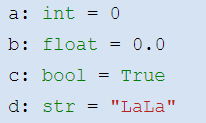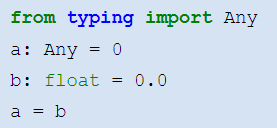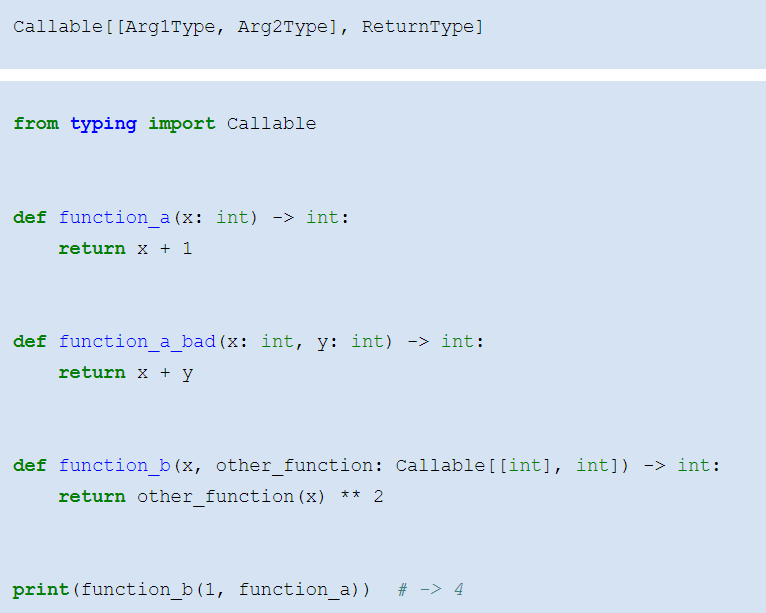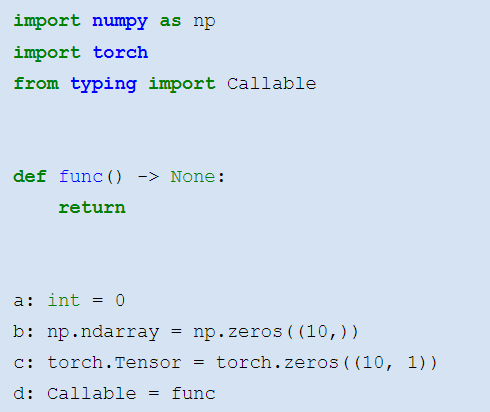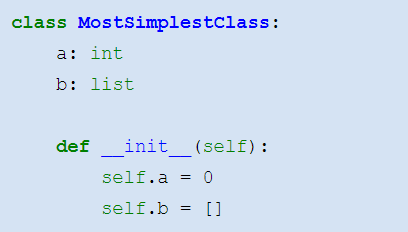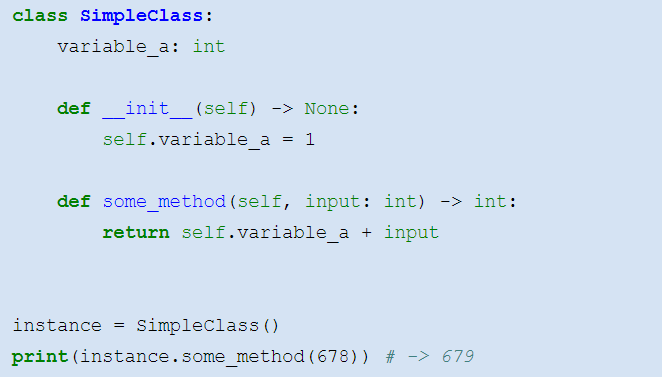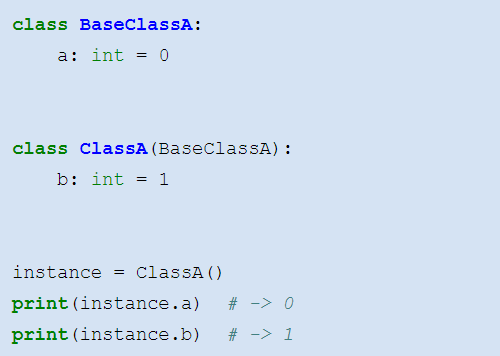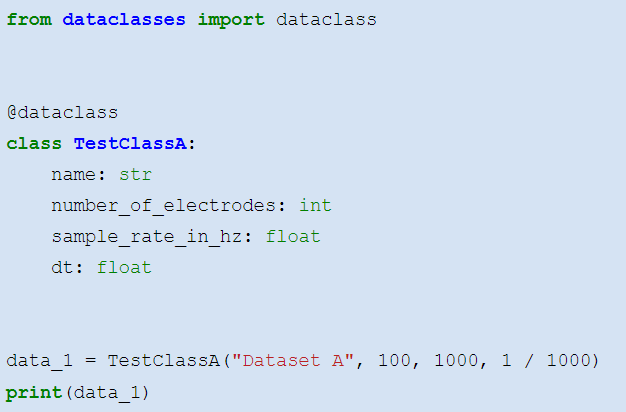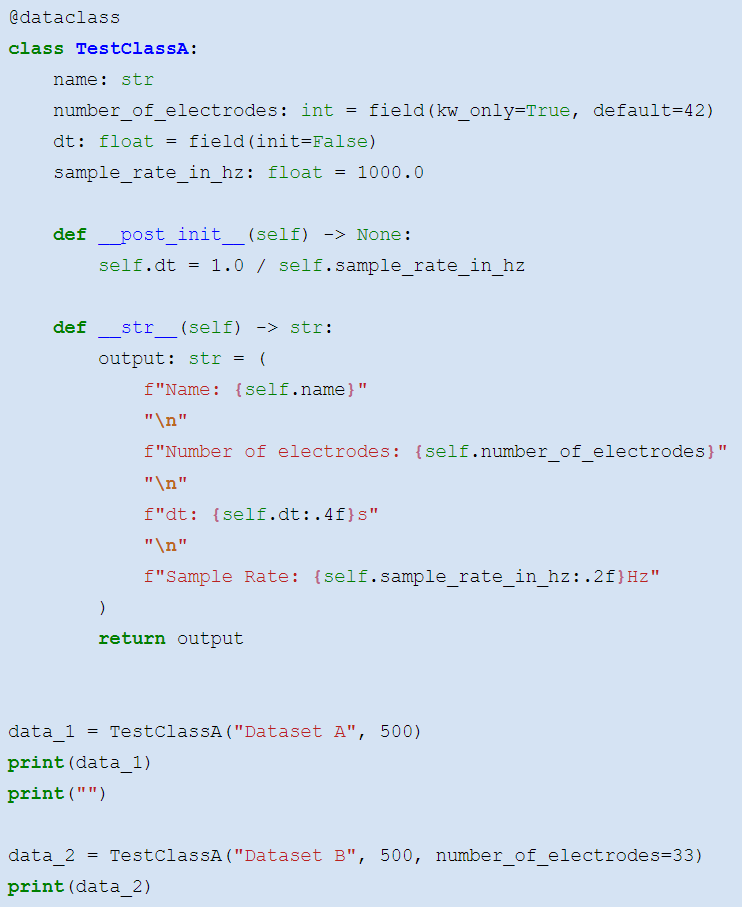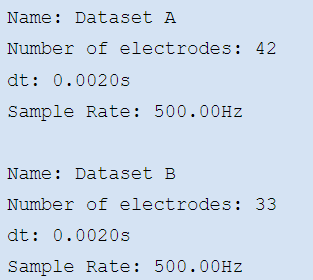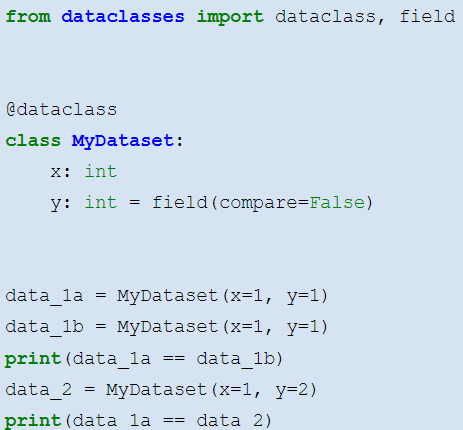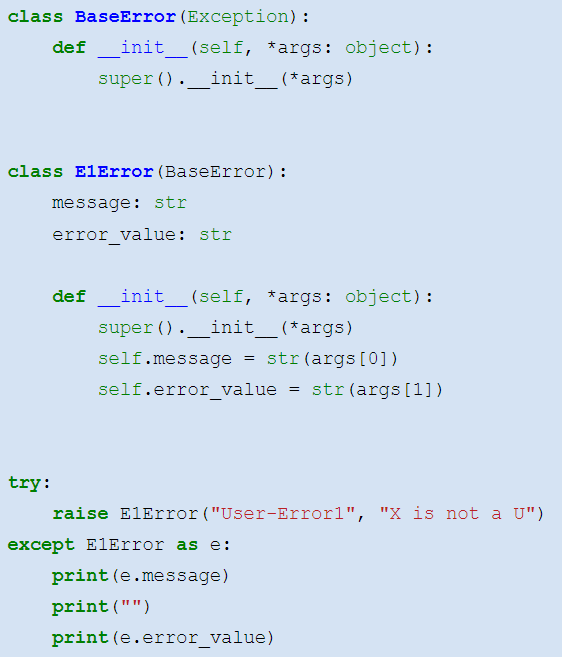12 KiB
Topic #1: Advanced Programming Concepts
Type annotations
What is it ?
Type annotations specify which type a variable is.
It‘s optional, but very useful!
What is it good for ?
PEP 484 – Type Hints 29\-Sep\-2014:
_“This _ PEP aims to provide a standard syntax for type annotations, opening up Python code to easier static analysis and refactoring, potential runtime type checking, and perhaps\, in some contexts code generation utilizing type information .
_Of _ _these goals, static analysis is the most important. This includes support for off-line type checkers such as _ mypy , as well as providing a standard notation that can be used by IDEs for code completion and refactoring .
[…]
_It _ should also be emphasized that Python will remain a dynamically typed language, and the authors have no desire to ever make type hints mandatory, even by convention .”
David’s redefinition:
It is a part of your automatic documentation (like with meaningful variable names). If another person gets your source code they understand it easier.
Your editor might thank you . Do to some new features in Python 3.10, the modern editors that do syntax highlighting and error checking have a harder time to infer what you mean. The more it need to think about what you mean, the slower your editor might get or even fail to show you syntax highlighting.
Static code analysis is really helpful . It showed me any problems ahead that I would have figured out the hard way otherwise.
Packages like the just-in-time compiler numba can produce better results if you can tell it what the variables are.
When and how do we do it ?
…mostly when we introduce new variables or define functions or classes:
Variables with different types:
…could also be explicit list with ‚or‘ separators…
Functions , more complex types …
More information :
https://davrot.github.io/pytutorial/python_basics/python_typing/
What is a class ?
A class is a container for data attributes and functions methods . They bundle properties of ‚objects‘ and actions that can be performed with/on them.
Classes help to modularize and organize your code even more than functions.
Class hierarchies are useful for re-using code which is common for different ‚objects‘
Dataclasses are specific classes in Python intended to represent data that ‚belongs together‘.
Vehicle :
wheels : int
speed : float
accelerate speed : float
stop
Bus( Vehicle ):
passengers : int
routenr : int
intake : float
board nrpass : int
Car( Vehicle ):
passengers : int
board nrpass : int
Truck( Vehicle ):
company : str
weight : float
load weight : float
parent _ _ class _ / _ superclass
wheels : int
speed : float
passengers : int
litres : float
kwh : float
accelerate speed : float
stop
board nrpass : int
fill litres : float
charge kwh : float
Electric Car:
kwh : float
charge kwh : float
Petrol(Car):
litres : float
fill litres : float
child _ _ class _ / _ subclass
Hybrid(Petrol, Electric ):
b) Including and setting attributes variables:
please don‘t initialize in attribute section !
a) Defining and instantiating a class:
c) Including and using methods functions:
c) multiple inheritance
There are special methods for certain purposes:
__ init __: called always when a class is instantiated. Good for initalizing and setting up a meaningful state for a class instance.
__ str __: called by str object and the built-in functions format() and print() to compute the “informal” or nicely printable string representation of an object. See also __ repr __ for the built-in function repr .
super(): refers to the parent class. Good to call functions from that class. Example:
More information :
https://davrot.github.io/pytutorial/python_basics/class /
The dat a class is very similar to normal classes, but it requires type annotations thus serving a good programming style. You have to import from dataclasses and use a decorator @ dataclass when you define a dataclass:
there will be an error without these annotations !
A dataclass has an automatic __ init __ method which can be used to populate the attributes …
Further Features I
default_factory can be used to specify automatic generation of default values.
TestClassA(name='', number_of_electrodes=0, dt=0.0, sample_rate_in_hz=0.0)
Further Features I
defaults can also be specified in the class definiton please do not do this to mutables \!
attributes can be spared from initialization
attributes can explicitly be specified as keywords
__ post_init __ if you have to do some init of your own…
__ str __ for a nice printout!
Why dataclasses ?
putting data together into meaningful containers…
appropriate type handling…
versatile and safe initialization methods…
makes comparing data sets easy…!
… compare everything
More information :
https://davrot.github.io/pytutorial/python_basics/dataclass/
Catch me if you can !
syntax errors
logical errors
data inconsistencies
exceptions
inadequate usage or user input
…
Assert checks if a condition is true. If not, it issues and error and stops program execution. Example:
Use it often to make your code safe to use, or to discover inconsistencies in input data!
import numpy as np
def solve_quadratic a : float \, b : float \, c : float -> tuple [ float , float ]:
assert isinstance ( a , float ), " argument 'a' must be float !"
assert isinstance ( b , float ), " argument 'b' must be float !"
assert isinstance ( c , float ), " argument 'c' must be float !"
assert a != 0 , " argument a must be non-zero, otherwise it's not a quadratic equation !"
sqrt_arg = - 4 * a * c + b ** 2
assert sqrt_arg >= 0 , " root argument must be positive for non- imaginary solutions !"
x1 = \+ np \. sqrt \( \- 4 \* a \* c \+ b \*\* 2 - b ) / 2 * a
x2 = \- np \. sqrt \( \- 4 \* a \* c \+ b \*\* 2 - b ) / 2 * a
return x1 , x2
import numpy as np
def solve_quadratic a : float \, b : float \, c : float -> tuple [ float , float ]:
x1 = \+ np \. sqrt \( \- 4 \* a \* c \+ b \*\* 2 - b ) / 2 * a
x2 = \- np \. sqrt \( \- 4 \* a \* c \+ b \*\* 2 - b ) / 2 * a
return x1 , x2
solve_quadratic "A" \, "B" \, "C"
Assert is better than if and exception thrown by hand, since ist shorter and ist immediately clear without adding a comment that some checking is performed…
Try … Except … Else … Finally …
Errors need not terminate your program. Each error raises an exception, and you can catch that exception and handle it properly!
Example for different exceptions …
… and example for handling an exception nicely :
try this piece of code…
i in range n\_files:
try :
# open file[i] for read
# read neural activity into temp array
# normalize temp array by its sum
except OSError :
# assign None to data[i]
else :
# assign temp array to data[i]
finally :
# close file if open
print "Successfully read existing data files\.\.\."
… if the specified exception occurred , execute this piece of code ‚ error handling ‘ …
… otherwise , execute this piece of code. You can put code here which runs only correctly when the exception did not occur…
… in any case , execute this piece of code, irrespectively of errors having occurred/not occurred ‚clean\- up ‘ . When an unhandled exception occurred, execution stop after this code!
division by zero occurs !
everything is okay!
file does not exist , or is corrupt !
General form, example :
i in range n\_files:
try :
# open file[i] for read
# read neural activity into temp array
# normalize temp array by its sum
except OSError :
# assign None to data[i]
else :
# assign temp array to data[i]
finally :
# close file if open
print "Successfully read existing data files\.\.\."
Possible exceptions …
…and you can define your own!
Exceptions have associated information in their attributes
Raising exceptions
…or a newly defined exception …
When you determine that something goes wrong, you can yourself raise an exception…
…either a matching , predefined one
Using the debugger
The VSCode debugger lets you follow, monitor, and manipulate the execution of program code…
Examples of actions possible :
step over, step in, step out
continue
breakpoints, conditional breakpoints, function breakpoints
inspection and change of variables
monitoring
…
Interactive demonstration …
More information :
https://davrot.github.io/pytutorial/workflow/vscode_debug /
https://davrot.github.io/pytutorial/python_basics/exceptions /



